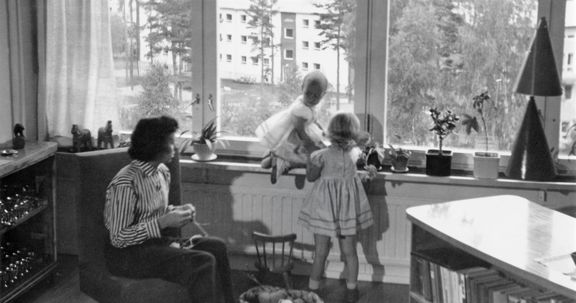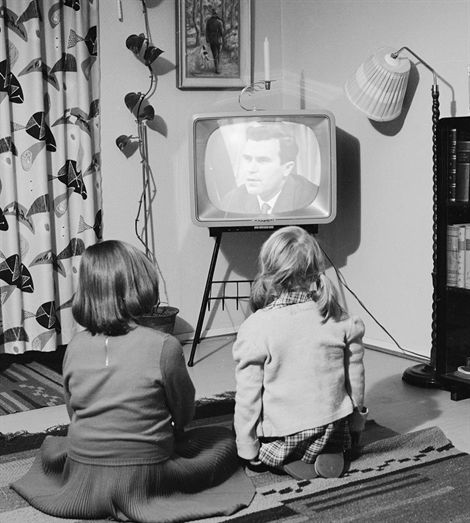History
The story of Sampo began in 1909. This brief history of Sampo encapsulates all of the relevant milestones of Sampo Group - from the early years prior to Finland’s independence right through to the present day.

Wartime rationing was now in the past and Finnish industry picked up. Homes started to be equipped with electric stoves, washing machines and other household appliances, which were paired with new insurance products by Sampo.

Television offered entertainment also for children and new business opportunities for insurance companies.
1957
This was when Sampo insured the first television.
The early 1950s saw Finnish supermarkets including oranges and bananas among their product ranges, which represented the end of wartime rationing.
The number of Sampo employees had doubled by the end of the 1940s. The growing company also started to place emphasis on securing a sense of togetherness. In 1955 Sampo purchased an island estate on the southwestern coast of Finland near Turku for use as shared recreational facilities for employees. Sampo employees could now spend summer days in the archipelago and enjoy such activities as volleyball, Finnish baseball and orienteering. Friendly games were organized between company departments, as well as with different insurance companies.
Employee education was another new focus point. Sampo organized in-house training sessions on a variety of insurance-related topics. The first study program in the field, which included a standardized degree, was founded in 1958.
The 1950s was marked with a transition from an agricultural society to an industrial one. Paying off war reparations had a positive impact on both the metal and shipbuilding industries. Department stores were opened in cities, mopeds and motorcycles took over the streets and highways, and the Helsinki Summer Olympics in 1952 left the population enthralled.
Homes became equipped with new appliances such as FM radios, electric stoves, refrigerators, and pulsator washing machines, all of which came with their respective insurance policies. Meanwhile, the television insurance premium at the time was determined by the size of the picture tube.
Working through the demands of war reparations brought a new focus on planning and efficiency in Finland. And even Sampo started to actively "rationalize" its actions. In 1950, there were no less than 28 distinct rationalizing projects. These included optimizing account settlements and speeding up the processing of insurance policies. Sampo was seen as a well-organized, technically up-to-date company.